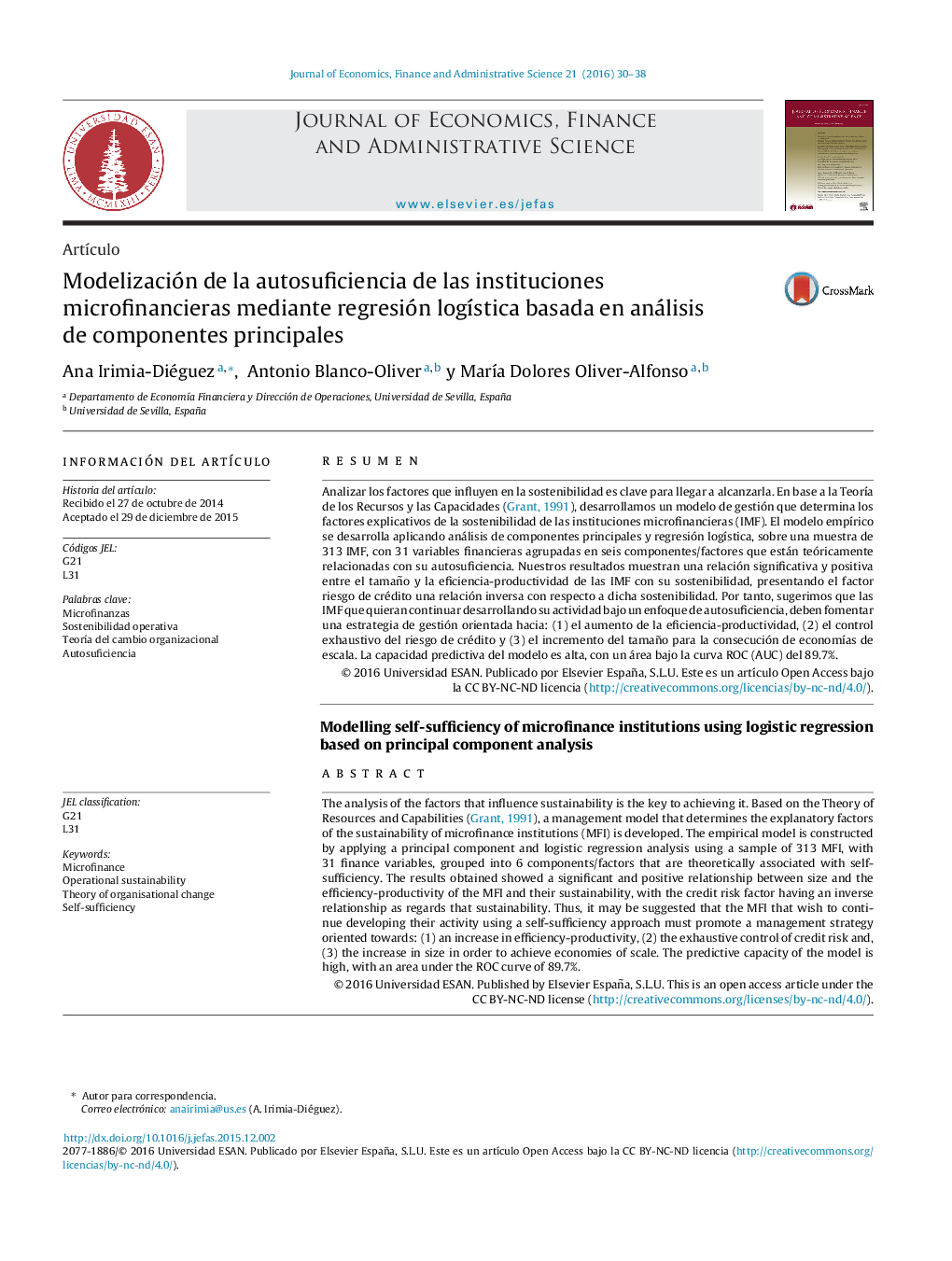| کد مقاله | کد نشریه | سال انتشار | مقاله انگلیسی | نسخه تمام متن |
|---|---|---|---|---|
| 1025165 | 1483076 | 2016 | 9 صفحه PDF | دانلود رایگان |
ResumenAnalizar los factores que influyen en la sostenibilidad es clave para llegar a alcanzarla. En base a la Teoría de los Recursos y las Capacidades (Grant, 1991), desarrollamos un modelo de gestión que determina los factores explicativos de la sostenibilidad de las instituciones microfinancieras (IMF). El modelo empírico se desarrolla aplicando análisis de componentes principales y regresión logística, sobre una muestra de 313 IMF, con 31 variables financieras agrupadas en seis componentes/factores que están teóricamente relacionadas con su autosuficiencia. Nuestros resultados muestran una relación significativa y positiva entre el tamaño y la eficiencia-productividad de las IMF con su sostenibilidad, presentando el factor riesgo de crédito una relación inversa con respecto a dicha sostenibilidad. Por tanto, sugerimos que las IMF que quieran continuar desarrollando su actividad bajo un enfoque de autosuficiencia, deben fomentar una estrategia de gestión orientada hacia: (1) el aumento de la eficiencia-productividad, (2) el control exhaustivo del riesgo de crédito y (3) el incremento del tamaño para la consecución de economías de escala. La capacidad predictiva del modelo es alta, con un área bajo la curva ROC (AUC) del 89.7%.
The analysis of the factors that influence sustainability is the key to achieving it. Based on the Theory of Resources and Capabilities (Grant, 1991), a management model that determines the explanatory factors of the sustainability of microfinance institutions (MFI) is developed. The empirical model is constructed by applying a principal component and logistic regression analysis using a sample of 313 MFI, with 31 finance variables, grouped into 6 components/factors that are theoretically associated with self-sufficiency. The results obtained showed a significant and positive relationship between size and the efficiency-productivity of the MFI and their sustainability, with the credit risk factor having an inverse relationship as regards that sustainability. Thus, it may be suggested that the MFI that wish to continue developing their activity using a self-sufficiency approach must promote a management strategy oriented towards: (1) an increase in efficiency-productivity, (2) the exhaustive control of credit risk and, (3) the increase in size in order to achieve economies of scale. The predictive capacity of the model is high, with an area under the ROC curve of 89.7%.
Journal: Journal of Economics, Finance and Administrative Science - Volume 21, Issue 40, June 2016, Pages 30–38
